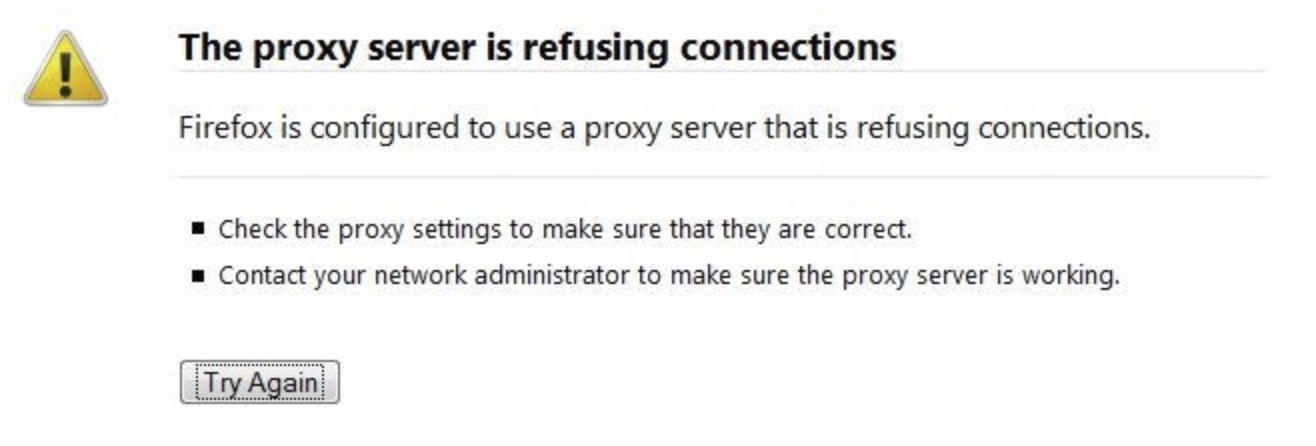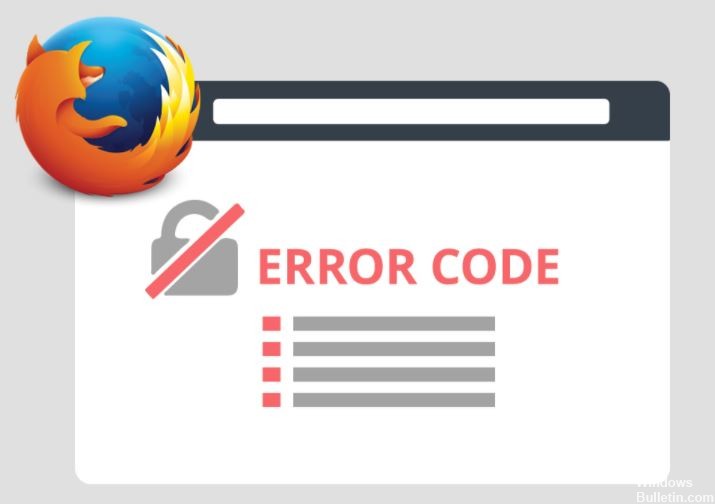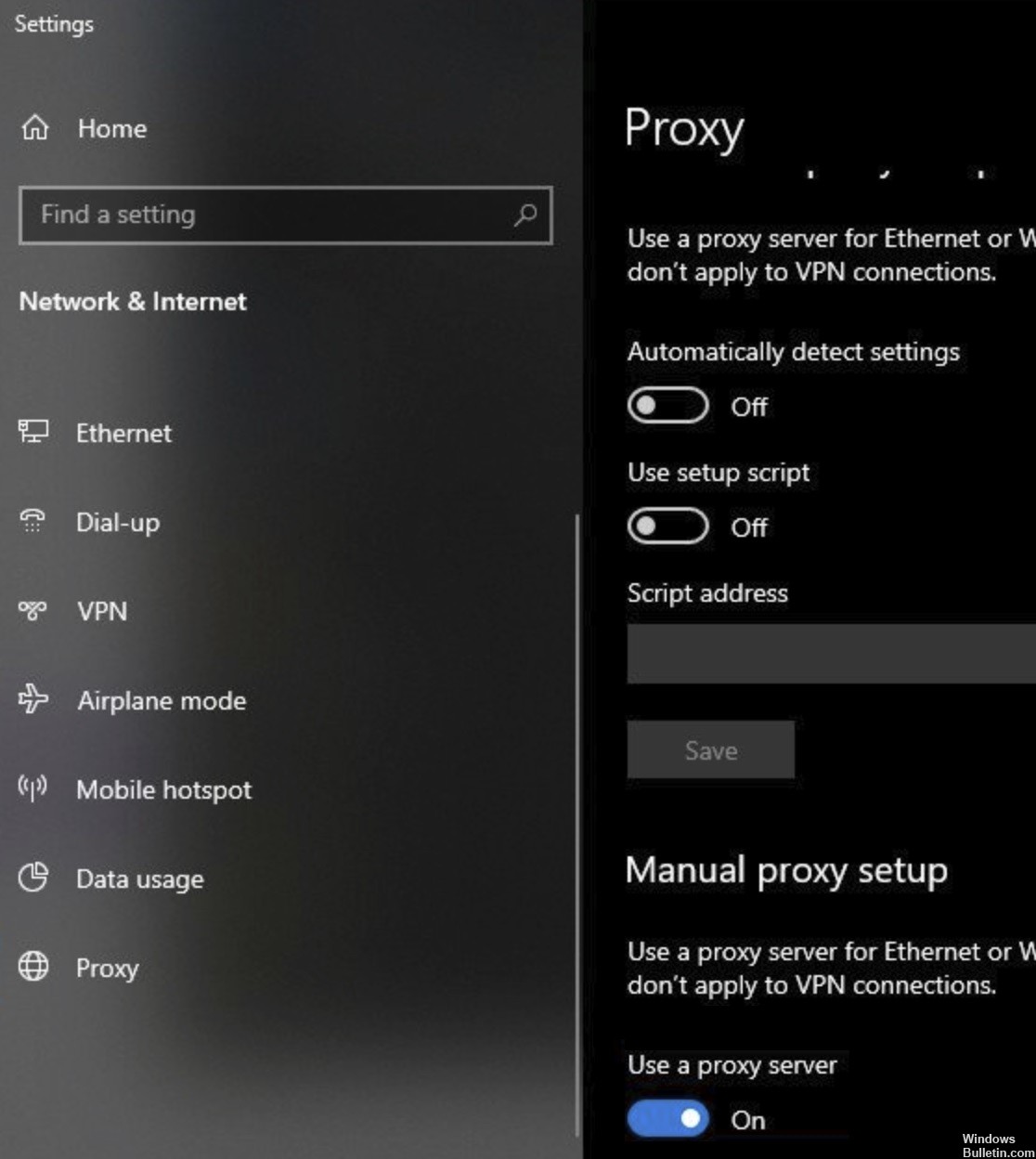Updated April 2024: Stop getting error messages and slow down your system with our optimization tool. Get it now at this link

Firefox is one of the most popular browsers on the market today. According to most users, it is the third most popular browser, behind only Google Chrome and Safari.
Unfortunately, there are always problems when using the Firefox browser. One of them is an error where the proxy server refuses to connect.
The result of this error is that you cannot access the Internet at all. This is often assumed to be an Internet connection problem. However, there are common solutions to this proxy connection problem, if you know where to look.
What causes the “Proxy server denies connection” error message in Firefox?

There may be several reasons why the site you’re trying to visit doesn’t open properly. It may be adware or malware, an error in your local network settings, or Firefox proxy server settings themselves. It’s also possible that the webpage/website itself is to blame, in which case I can’t help you.
How to solve the “Proxy server is refusing connections” error in Firefox?
You can now prevent PC problems by using this tool, such as protecting you against file loss and malware. Additionally it is a great way to optimize your computer for maximum performance.
The program fixes common errors that might occur on Windows systems with ease - no need for hours of troubleshooting when you have the perfect solution at your fingertips:
April 2024 Update:

Disable your built-in proxy server
- Press the Windows + R keys to open the Run dialog box.
- Type ms-settings:network-proxy and press Enter to open the Proxy tab in the Settings menu.
- Scroll to the right to the Manual Proxy Configuration section.
- Disable the Use a proxy server option.
- Restart your computer.
Remove the VPN client
- Press the Windows + R keys to open the startup window.
- Type appwiz.cpl and press Enter to open the Programs and Features window.
- If prompted by User Account Control (UAC), click Yes to grant administrator rights.
- Scroll through the list of installed applications and find the VPN client you are using, right-click on it and select Uninstall from the context menu.
- Follow the instructions on the screen to complete the removal, then restart your computer.
Make Firefox use automatic proxy detection
- Open the Mozilla Firefox browser.
- Click the action button in the upper-right corner of the screen.
- From the pop-up menu, select Settings or Preferences.
- Select the General category from the left-hand vertical menu.
- Scroll down the right menu to Network Settings.
- Tap the Settings button to open the Advanced menu.
- Set Internet Access Setup to Automatically detect proxy settings for this network.
- Click Ok to save your changes, then restart your Firefox browser.
Add a URL’s SSL port to the list of allowed connections
- Scan the URL causing the error to see which port is active for HTTPS.
- Open the proxy configuration settings and find the option to add the port as an alternative SSL port.
- Save the configuration changes and reboot the computer.
Expert Tip: This repair tool scans the repositories and replaces corrupt or missing files if none of these methods have worked. It works well in most cases where the problem is due to system corruption. This tool will also optimize your system to maximize performance. It can be downloaded by Clicking Here
Frequently Asked Questions
How do I fix my inability to connect to a proxy server?
- Reset Internet settings.
- Disable the proxy server.
- Use VPN.
- Check your computer for malicious programs.
- Use ipconfig command.
- Reset Chrome to default settings.
- Uninstall all suspicious applications.
- Edit your registry.
How do I reset proxy settings in Firefox?
How do I fix a proxy connection failure in Firefox?
- Open Firefox, then open the Options menu by clicking Tools -> Options in the upper left corner.
- Click the Advanced button.
- Click the Network tab, then click Settings.
- In the Connection Settings window, select No Proxy. (The Use system proxy settings option is also acceptable).
How do I fix a proxy connection failure in Firefox?
- Check proxy settings in your browser.
- Disable proxy server on your local network.
- Disable manual proxy configuration in your settings.
- Check your VPN.
- Check your computer for malware.
- Clear your browser cache.
How do I fix a proxy problem?
- Press the Windows+S key on your keyboard.
- Type "Control Panel" (without the quotes), then press Enter.
- Click on Network and Internet.
- Select Internet Options.
- Click the Connections tab, and then click Local Area Network Settings.
- Uncheck "Use a proxy server for local network".


